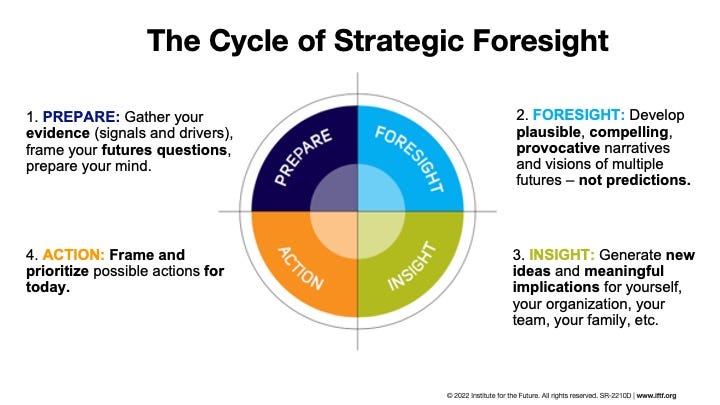Finding a path to travel on a journey to adapt to the new environment of the knowledge driven economy requires more courage than previous shifts. We need a better understanding of the shifting plates on which organizations inhabit the earth. Permit me to suggest that there are three pillars in the Art of Adaption:
- Curiosity
- Being an Action Visionary, and
- Sustainability
Why do organizations and CEOs need to adapt? Adapt to what? In the 21st Century ecosystem, where economic, social, demographic, and technology are permanently invading the climate and culture, we need to recognize the impact on our institutions. Darwin said, “It Is NOT the Strongest of the Species that Survives, but the Most Adaptable.” Our organizations very sustainability, our existence requires us to make sure that we learn the lessons of all living things. Learn how to adapt or slowly but surely become extinct. This is true for not only the organization, but particularly for the CEO. The climate is different and our programs, operational practices, and visioning needs to adapt to the new environment in which we exist.
Association CEOs and Board Chairs are facing the challenge of courage over tradition and short-term thinking over sustainability. Today, we are confronted with an extraordinarily fast-changing social, economic, political, and technological environment. Whether here in the United States or across the globe we must come face-to-face with the reality of a more complex and interdependent environment. While paradigm shift has been underway for several decades, associations have been slow to heed its warnings. Like all operational and cultural shifts it takes some time for them to be fully appreciated and accepted. Far too often we are relying on quick fixes. These fixes include: software over strategic technology development, tactics over strategy, and outmoded governance structures. Current governance structures are a particularly difficult problem. Today, many structures are more akin to the outgoing industrial age and lack the necessary vision of an evolving knowledge driven society.
Organizations must learn to adapt whether they are individual member driven institutions, trade organizations, or foundations. It is not that times are changing, it is that times have changed!
The obstacles to making this transition are not to be underestimated. Some of these obstacles sound like the same things that inhibited more sustainable development in years past. These include: time, gaining trust within the organization, including its executive and board leadership, staff, and volunteer groups. The sheer volume of information and help groups available to try to balance this challenge against the status quo may not be providing the in-depth process development that the new environment requires. Courageous leadership will be necessary on this journey. Add huge shifts in demography, demographics, the economy, social changes, and the accelerated speed with which they occur and we face the need for new models and processes, better thinking, and reflection on the standard practices that have brought us to this place.
Providing data fairly presented to governance and staff that broadens their perspective roles and responsibilities against the traditions and often the well-meaning desire to preserve the status quo against the tumultuous changes may be an uncomfortable role for the executive, but clearly required. The level and need for meaningful data and the analytical tools and skills to use that data to support responsible understanding and predictions about the future is sorely lacking in most of our associations and foundations. At least in the foundation world the idea of understanding and predicting donor behavior is more common place. Unfortunately, throughout the individual member and trade organizations, this level of analytical skill, data collection, and foresight is less operational.
Recognizing that we live in a much more complex environment that moves knowledge and opinion at the click of a mouse is uncomforting while at the same time reality. Our planning savvy is inhibited by old methods and the uncomfortable knowledge that many plans put on paper are never given the light and fertilizer of actualization in the daily operations of our organizations. Organizations are stymied by a whirlwind of daily tasks and functions which substitute for being an action visionary and building a sustainable future for the institution’s mission. And while it is unlikely to quickly and dramatically change in the short term, internal organizational jargon, as well as consultant jargon, may have a tendency to dance in the ballroom of past successes rather than the dreams and actualization of the futures we face.
There is a long arc on which these pillars hold up the organizations of the future. These pillars are not silos, but rather an interdependent flow through a multi-year journey. They must operate with both focus and agility to build success. Each pillar requires the interplay of curiosity, action visioning, and sustainable development. One without the other is not a path to success.
The following pictorial is a summary of the three pillars:
Pillar ONE – Curiosity (The Learning Pillar)
- Learning to ask powerful questions
- Acknowledging the ecological changes associated with demographic, economic, technological, and social changes
- Staying in turn with the organizational and mission specific literature
- Providing uncomfortable data, fairly presented to governance and staff, that broadens their perspective role, responsibility, and insight
- Learning new analytical skills which promotes a reasoned approach to the complexities of modern society
Pillar TWO – Action Visionary (The Balance Pillar)
- Strategy First
- Technology as Strategy
- Facing Uncomfortable Truths
- A Governance Model for the future
- Creating a shared understanding of the issues on which to build partnerships, alliances, and drive a forward thinking agenda
- Planning savvy
- Recognizing the speed of change and its impact on the new ecology of work and mission
Pillar THREE – Sustainability (The Power Pillar)
- Capacity and Confidence Building
- Meaningful Measurement
- Optimization
- Long-Term Development
- Technology integration
- Fiscal Strength
Future posts will explore the depth of each pillar, and the processes and learning required to seek the many futures that the new environment will force us to adapt too or be diminished.
Comments are welcome at info@associationactivision.com.



